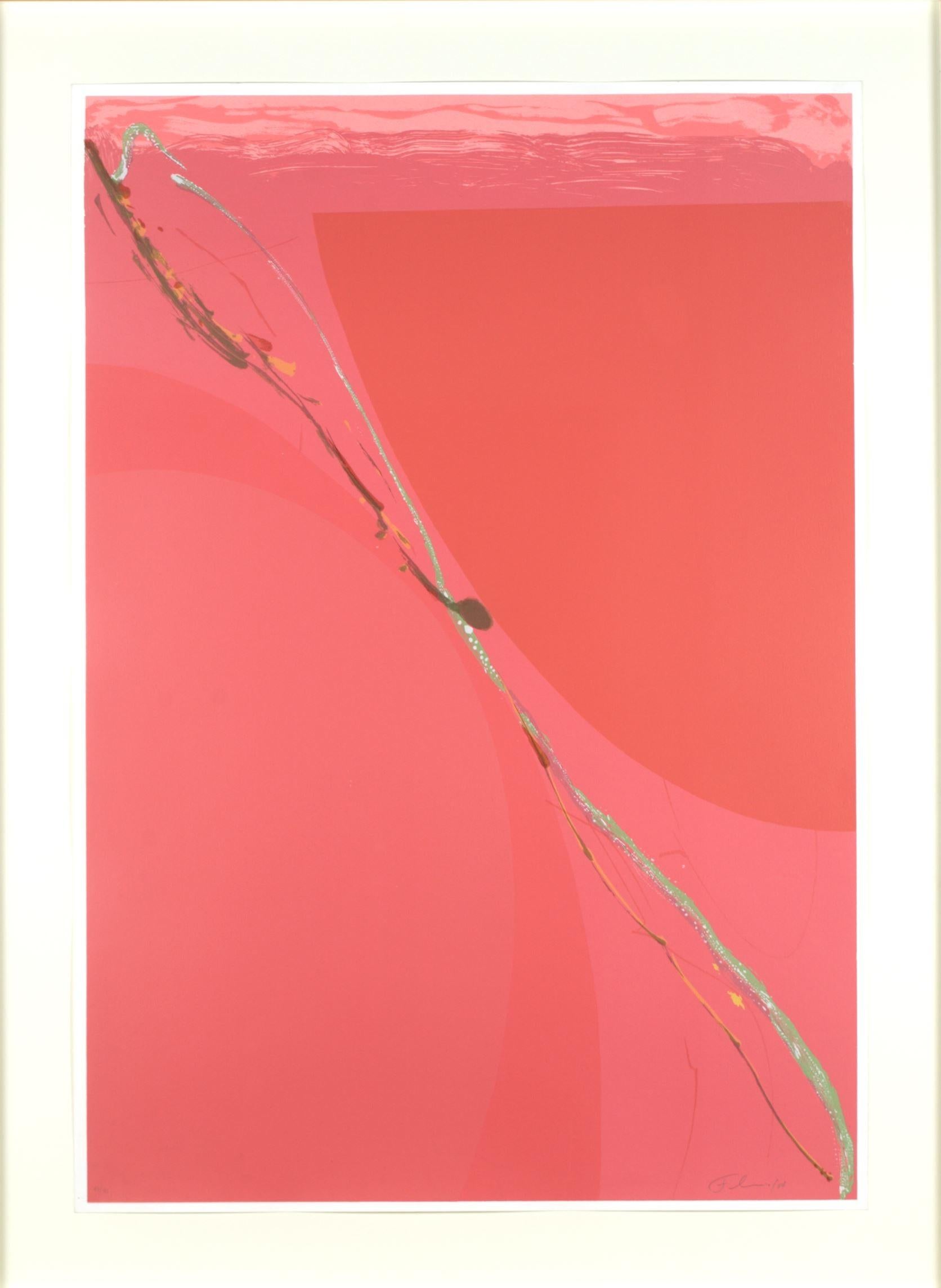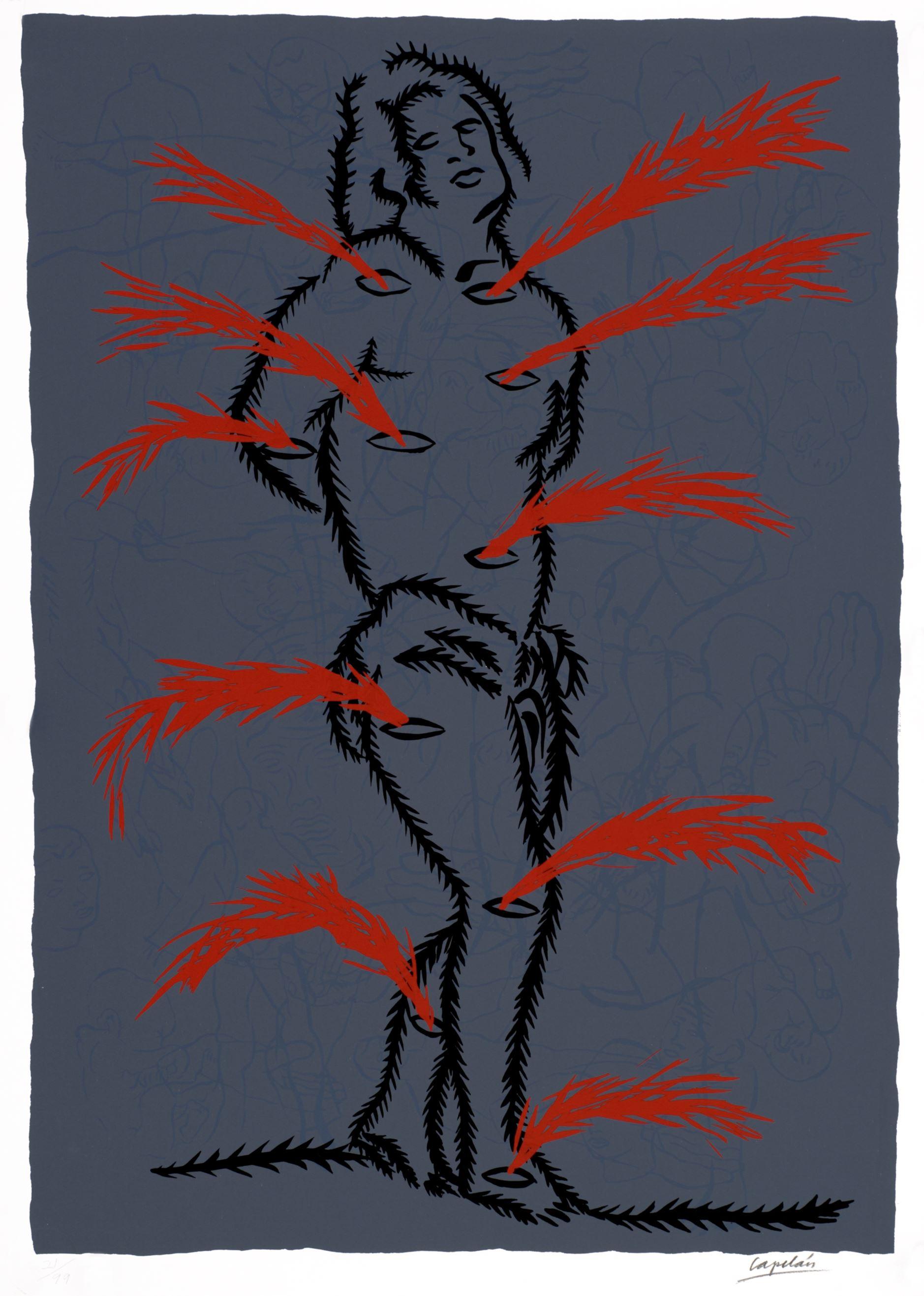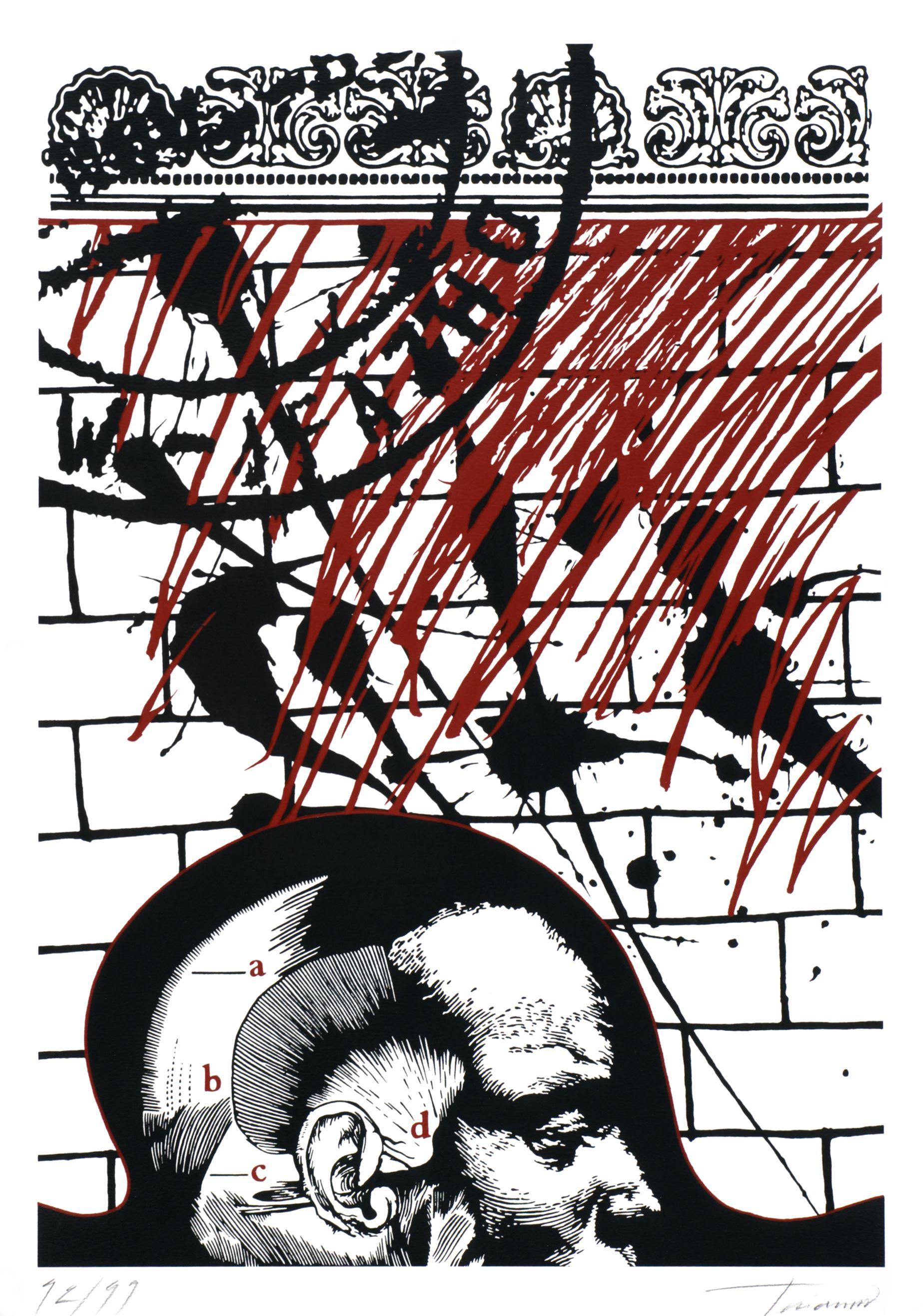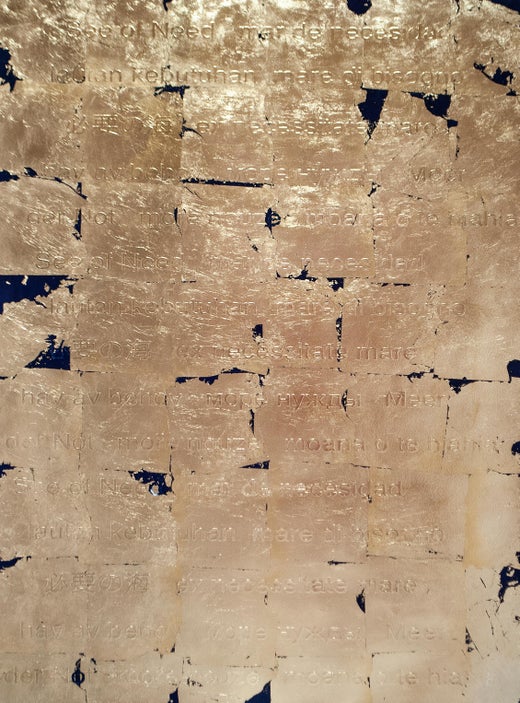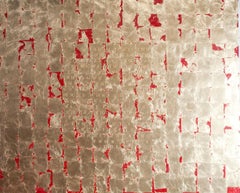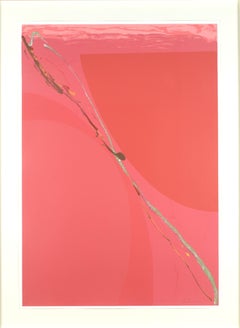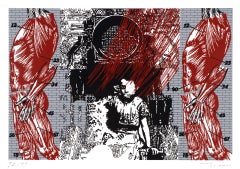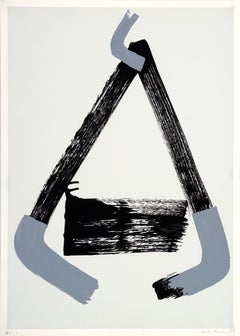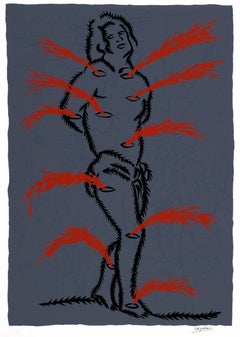Items Similar to "Sacrifice Economy" Silkscreen 39" x 27.5" inch by Patricio Gonzalez
Want more images or videos?
Request additional images or videos from the seller
1 of 9
Patricio Gonzalez"Sacrifice Economy" Silkscreen 39" x 27.5" inch by Patricio Gonzalez2021
2021
$1,800
£1,361.82
€1,571.76
CA$2,514.10
A$2,795.20
CHF 1,463.12
MX$34,282.18
NOK 18,629.19
SEK 17,588.16
DKK 11,728.96
Shipping
Retrieving quote...The 1stDibs Promise:
Authenticity Guarantee,
Money-Back Guarantee,
24-Hour Cancellation
About the Item
"Sacrifice Economy" Silkscreen 39" x 27.5" inch by Patricio Gonzalez
Silkscreen
Not framed
From "Looking for Happiness" series
LOOKING FOR HAPPINESS
Like "el dorado", a cultural construction, a myth, the Looking for happiness series talks about the illusion of happiness.
Using coordinates between different geographical points and world views, seeking to generate a dialogue between stories.
In this way, places speak to tell us about degraded utopias, religious crusades, martyrs and oppressors, wars, victories, and defeats. All searches for what cannot be found.
The infinite existing possibilities, in this continuous present and its accumulation, to be history. The utopian idea of achieving completeness or completeness.
The transformation of the fabric into jewelry, the transmutation that moves from the sacred to the economic.
The "object of desire" is the engine of life and its different permutations.
Curriculum vitae
Born on February 14, 1974, Santiago, Chile. Study at the School of Fine Arts of t
he University of Chile and the University Complutense Hotels guest, Spain.
He also attended workshops in painting, drawing and engraving the Circulo de Bellas Artes in Madrid. Work in the study of Guillermo Muñoz Vera, Madrid.
SOLO EXHIBITIONS
2018
Kadoshiro Art Gallery “Looking for Happiness” Eduardo Lira Art Gallery “IT ́s not here”
2017
Off the wall / serie Golden Bitches/Beaches>(march 9) Galeria Artium-Miami,Usa
2016
”Razones para la venganza” Galeria Artium-Miami,Usa.
2015
"Out Doors", Gallery Latam Santiago-Chile.
2013
"Coming down like flies" Latam Gallery Santiago, Chile.
2012
"Coto de Caza" Artium Gallery, Santiago, Chile.
2010
"Reasons for permanecia" Praxis Gallery, Santiago, Chile.
2009
"Fissure postcard" fifhy one Dot Gallery, Miami USA.
2008
"Connotations Sinister Galeria Trece, Santiago-Chile.
2007
"From the periphery to the center" Gallery 000 ", Santiago-Chile.
2005
"Lost Time" Gallery Forest, Consepcion- Chile.
2006
"Permanent Revolution" Artium Gallery, Santiago-Chile.
2005
Providencia Santiago Chile-Cultural Center, “Carrera”
2004
"personal mythologies", Praxis Gallery, Santiago-Chile
GROUP EXHIBITIONS
2019
West palm Beach Art Fair Miami-Usa. Wynwood 28 //Eduardo Lira Art Gallery LA Show Art Fair / Blink Group
2018
Pinta Art Fair Miami-Usa. Kadoshiro Art Gallery /Eduardo Lira Art Gallery Wynwood Art Fair Miami-Usa. /Eduardo Lira Art Gallery
West palm Beach Art Fair Miami-Usa. IK Proyect //Eduardo Lira Art Gallery
2017
Boca raton Art Fair Miami-Usa.
Wynwood Art Fair Miami-Usa.
West palm Beach Art Fair Miami-Usa.
”Our wold” fotography Artium Gallery ,Miami-Usa.
Palm Beach Art fair
2016
Pinta Art Fair Miami-Usa.
MAC Fine arts Gallery Ford Lauderday
Galeria Artium-Corporacion beneficaTecho USA. Patio Bullrich- Corporacion benefica Techo Argentina.
Galeria Artium “Chrismas for everyone”
2014
Bio Gallery, Santiago-Chile. Gallery Latam, Santiago-Chile. Artium Gallery, Santiago-Chile.
2013
Gallery Latam, Santiago-Chile Fair Chaco, Santiago-Chile. Fair Faxxi, Santiago-Chile.
2012
Gallery thirteen, Santiago-Chile. Fair Faxxi, Santiago-Chile. Recoleta Cultural Center, Chile.
2011
Extension Center University of Chile, Artists xxl century, Santiago-Chile. Extension Center of Las Condes, Santiago-Chile.
Praxis Gallery, Santiago-Chile.
2010
Fair Chaco, Santiago-Chile. Fair Faxxi, Santiago-Chile. Artium Gallery, Santiago-Chile. Gallery La Sala, Santiago-Chile.
2009
"Latin American Painting Now" Maples Museum, Miami-USA.
Fair Faxxi, Santiago-Chile.
Dot fifhy Gallery One, Miami-USA.
Extension Center University of Chile, Artists xxl century, Santiago-Chile.
2008
Extension Center University of Chile, Artists xxl century, Santiago-Chile.
Galeria Trece, Santiago-Chile. .
2006
Extension Center University of Chile, Artists xxl century, Santiago-Chile.
2005
Galeria Trece, Santiago-Chile ..
Cultural Center Las condes.Santiago-Chile.
"emerging national Art", Santiago-Chile military HISTORICAL Museum.
2004
Extension Center University of Chile, Artists xxl century, Santiago-Chile. Chilean Institute Spanish "Expansive", Santiago-Chile
2003
Cultural Center ÑUÑOA "POP"
2002
Museo Historico Militar "resent memories"
2001
Chilean Spanish Cultural Center, Santiago-Chile.
1999-1996
Recoleta Cultural Center, Chile Complutense University Circulo de Bellas Artes, Spain. Workshop Arco, Spain.
1995-1988
Sala Juan Egenau, Santiago-Chile.
"re-box gallery Buchi.
Museum of fine arts, Matisse, Arts, Santiago-Chile
SELECTED IN THE FOLLOWING ROOMS
2013
First prize Boat Building project architect Borja Garcia Huidobro, Mural x1,56 12.5 cm
Santiago, Chile
2010
First prize project Edificio Del Sol, Mural x1,40 8.5 cm
Santiago, Chile.
2009
Third prize "IV Consurso National ccu", Santiago-Chile. Hall Juan Egenau
2007
First prize Enjoy building project, Mural x1,70 14.5 cm
La Serena, Chile.
Second place Polincay, Santiago-Chile Competition
2005-2003
Third place Mattise (drawing) Museum of Fine Arts, Santiago-Chile Competition.
Brands
Caterpillar CCU
- Creator:Patricio Gonzalez (1974, Chilean)
- Creation Year:2021
- Dimensions:Height: 39 in (99.06 cm)Width: 27.5 in (69.85 cm)
- Medium:
- Movement & Style:
- Period:
- Condition:
- Gallery Location:Culver City, CA
- Reference Number:1stDibs: LU1085110565922
Patricio Gonzalez
Patricio Gonzalez Bezanilla (1974), studied at the School of Visual Arts at the University of Chile and University Complutence (Madrid-Spain). He has exhibited at the Museum of Maples, Miami, USA., Museum of Fine Arts, Santiago de Chile, Dot Fiftione gallery, USA, gallery THIRTEEN, Cultural Center of Spain, gallery La Sala, Museum of Contemporary Art in Valdivia, Military History Museum, UC Extension Center, Center cultural Chile-Spain, etc.
His work is presented as a token analogy of the invisible image of power.
His works are in private and public collections in Chile, Peru, Colombia, the USA, Canada, and Germany.
About the Seller
4.8
Gold Seller
Premium sellers maintaining a 4.3+ rating and 24-hour response times
Established in 2016
1stDibs seller since 2018
421 sales on 1stDibs
Typical response time: <1 hour
- ShippingRetrieving quote...Shipping from: Vitacura, Chile
- Return Policy
Authenticity Guarantee
In the unlikely event there’s an issue with an item’s authenticity, contact us within 1 year for a full refund. DetailsMoney-Back Guarantee
If your item is not as described, is damaged in transit, or does not arrive, contact us within 7 days for a full refund. Details24-Hour Cancellation
You have a 24-hour grace period in which to reconsider your purchase, with no questions asked.Vetted Professional Sellers
Our world-class sellers must adhere to strict standards for service and quality, maintaining the integrity of our listings.Price-Match Guarantee
If you find that a seller listed the same item for a lower price elsewhere, we’ll match it.Trusted Global Delivery
Our best-in-class carrier network provides specialized shipping options worldwide, including custom delivery.More From This Seller
View All"Silent Reality Everywhere" Print 53" × 40" inch Ed. 1/10 by Kate Garner
By Kate Garner
Located in Culver City, CA
"Silent Reality Everywhere" Print 53" × 40" inch Ed. 1/10 by Kate Garner
Signed and numbered by the artist.
Not framed. Ships in a tube.
Kate Garner is an English photographer, fine artist, and singer. Garner has photographed a wide range of musicians and celebrities, including Dr. Dre, Leigh Bowery, JT LeRoy, Angelina Jolie, Cate Blanchett, Anne Hathaway, David Bowie, Cameron Diaz, PJ Harvey, John Galliano, Björk, and Kate Moss.
Her work has appeared in the American and British versions of Vogue and Harper’s Bazaar as well as W magazine, Interview, GQ, Vanity Fair, Elle, and The Sunday Times.
Kate Garner was expelled from high school at the age of 16 and became a runaway who joined The Children Of God. To escape the grasp of the cult she hitchhiked from London through Eastern Europe to India in 1970, where she lived for a year as a traveler before being located by her parents. She attended art school at Blackpool in the North of England and later moved to London, where she began to both photograph and model for up-and-coming magazines such as The Face and i-D.
Kate Garner first came widely into the public eye as one-third of the 1980s avant-garde, new wave pop project Haysi Fantayzee, along with other members Jeremy Healy and Paul Caplin. Emanating from street art scenes such as the Blitz Kids that were cropping up in London in the early 1980s, Haysi’s music combined reggae, country, and electro with political and sociological lyrics couched as nursery rhymes.
Catapulted to stardom by their visual sensibilities, Haysi Fantayzee combined their extreme clothes sense – described as combining white Rasta, tribal chieftain, and Dickensian styles – with a quirky musical sound comparable to other new wave musical pop acts of the era, such as Bow Wow Wow...
Category
21st Century and Contemporary Pop Art Still-life Prints
Materials
Archival Ink, Archival Paper
"Looking For The Right God" Abstract Painting 59" x 79" in by Patricio Gonzalez
By Patricio Gonzalez
Located in Culver City, CA
"Looking For The Right God" Abstract Painting 59" x 79" in by Patricio Gonzalez
From "Looking for Happiness" series
LOOKING FOR HAPPINESS
Like "el dorado", a cultural construction, a myth, the Looking for happiness series talks about the illusion of happiness.
Using coordinates between different geographical points and world views, seeking to generate a dialogue between stories.
In this way, places speak to tell us about degraded utopias, religious crusades, martyrs and oppressors, wars, victories, and defeats. All searches for what cannot be found.
The infinite existing possibilities, in this continuous present and its accumulation, to be history. The utopian idea of achieving completeness or completeness.
The transformation of the fabric into jewelry, the transmutation that moves from the sacred to the economic.
The "object of desire" is the engine of life and its different permutations.
Curriculum vitae
Born on February 14, 1974, Santiago, Chile. Study at the School of Fine Arts of t
he University of Chile and the University Complutense Hotels guest, Spain.
He also attended workshops in painting, drawing and engraving the Circulo de Bellas Artes in Madrid. Work in the study of Guillermo Muñoz Vera, Madrid.
SOLO EXHIBITIONS
2018
Kadoshiro Art Gallery “Looking for Happiness” Eduardo Lira Art Gallery “IT ́s not here”
2017
Off the wall / serie Golden Bitches/Beaches>(march 9) Galeria Artium-Miami,Usa
2016
”Razones para la venganza” Galeria Artium-Miami,Usa.
2015
"Out Doors", Gallery Latam Santiago-Chile.
2013
"Coming down like flies" Latam Gallery Santiago, Chile.
2012
"Coto de Caza" Artium Gallery, Santiago, Chile.
2010
"Reasons for permanecia" Praxis Gallery, Santiago, Chile.
2009
"Fissure postcard" fifhy one Dot Gallery, Miami USA.
2008
"Connotations Sinister Galeria Trece, Santiago-Chile.
2007
"From the periphery to the center" Gallery 000 ", Santiago-Chile.
2005
"Lost Time" Gallery Forest, Consepcion- Chile.
2006
"Permanent Revolution" Artium Gallery, Santiago-Chile.
2005
Providencia Santiago Chile-Cultural Center, “Carrera”
2004
"personal mythologies", Praxis Gallery, Santiago-Chile
GROUP EXHIBITIONS
2019
West palm Beach Art...
Category
21st Century and Contemporary Modern Interior Paintings
Materials
Gold Leaf
"Untitled" Painting 39" x 30" inch by Patricio Gonzalez
By Patricio Gonzalez
Located in Culver City, CA
"Untitled" Painting 39" x 30" inch by Patricio Gonzalez
Patricio Gonzalez Bezanilla (1974), studied at the School of Visual Arts at the University o...
Category
21st Century and Contemporary Modern Interior Paintings
Materials
Gold Leaf
$6,000 Sale Price
20% Off
"ZIRCALLOY" Abstract Painting 48" x 66" inch by Cameron Michel
Located in Culver City, CA
"ZIRCALLOY" Abstract Painting 48" x 66" inch by Cameron Michel
Michel has been an apprentice to established artists Matthew Barney (NY), Sterling Ruby ...
Category
21st Century and Contemporary Abstract Expressionist Abstract Paintings
Materials
Resin, Wood, Mixed Media, Acrylic
"Collaboration 02" Abstract Painting 39" x 59" inch by Patricio Gonzalez
By Patricio Gonzalez
Located in Culver City, CA
"Collaboration 02" Abstract Painting 39" x 59" inch by Patricio Gonzalez
From "Looking for Happiness" series
LOOKING FOR HAPPINESS
Like "el dorado...
Category
21st Century and Contemporary Modern Interior Paintings
Materials
Silver
"If not now when" Abstract Painting 85" x 76" inch by Patricio Gonzalez
By Patricio Gonzalez
Located in Culver City, CA
"If not now when" Abstract Painting 85" x 76" inch by Patricio Gonzalez
Oil and gold leaves on cargo blanket
From "Looking for Happiness" series
...
Category
21st Century and Contemporary Modern Interior Paintings
Materials
Silver
You May Also Like
Flavio Garciandia, "Sin título IV", 2004, Silkscreen, 39.4x27.6 in
Located in Miami, FL
"Flavio Garciandia (Cuba, 1954)
'Sin título IV', 2004
silkscreen on paper
39.4 x 27.6 in. (100 x 70 cm.)
Edition of 106
ID: GAR1570-004-106"
Category
Early 2000s Abstract Prints and Multiples
Materials
Paper, Screen
Luis Rodolfo Trimano Argentinean Artist 2006 Original Hand Signed silkscreen n3
Located in Miami, FL
Luis Rodolfo Trimano (Argentina, 1943)
' Untitled III from Estigmas', 2006
silkscreen on paper
19.7 x 27.6 in. (50 x 70 cm.)
Edition of 106
ID: TRI1706-001-106_3
Hand-signed by author
Category
Early 2000s Contemporary Prints and Multiples
Materials
Paper, Engraving, Screen
Argentinean signed limited edition original art print silkscreen 27x19 in. n4
Located in Miami, FL
Justo Barboza (Argentina, 1938)
'Estribo', 1998
silkscreen on paper Guarro Geler
27.6 x 19.7 in. (70 x 50 cm.)
Edition of 30
Unframed
ID: BAR1437-004-030
Hand-signed by author
Category
20th Century Abstract Prints and Multiples
Materials
Paper, Screen
Uruguayan signed limited edition original art print silkscreen 27x19 in.
Located in Miami, FL
Carlos Capelán (Uruguay, 1948)
'Pensando en rojo', ca.2000
silkscreen on paper
27.6 x 19.7 in. (70 x 50 cm.)
Edition of 99
ID: CAP1205-010-001_9
Hand-signed by author
Unframed
Category
Early 2000s Contemporary Prints and Multiples
Materials
Paper, Engraving, Screen
Justo Barboza Argentinean Artist 1998 Original Hand Signed silkscreen n19
Located in Miami, FL
Justo Barboza (Argentina, 1938)
'Sin título (rosa rojo)', 1998
silkscreen on paper Guarro Geler
27.6 x 19.7 in. (70 x 50 cm.)
Edition of 15
Unframed
ID: BAR1437-019-015
Hand-signed b...
Category
20th Century Abstract Prints and Multiples
Materials
Paper, Engraving, Screen
Argentinean Artist hand signed limited edition original art print silkscreen n5
Located in Miami, FL
Luis Rodolfo Trimano (Argentina, 1943)
' Untitled V from Estigmas', 2006
silkscreen on paper
19.7 x 27.6 in. (50 x 70 cm.)
Edition of 99
Unframed
ID: TRI1706-001-106_5
Hand-signed by...
Category
Early 2000s Contemporary Prints and Multiples
Materials
Paper, Engraving, Screen
More Ways To Browse
Matisse Screen Print
Calder Wire Sculpture
Leger Hand Signed Lithograph
Munich Olympic
Corneille Lithograph
Glass Skull
Leo Castelli Lithograph
Alexander Calder 1975
Bernard Buffet Lithograph Paris
Claes Oldenburg Lithograph
Wash Art Print 1979
Vasarely Lithograph
Donald Judd Prints
Tiffany Pop Art
Jasper Johns Signed Lithograph
John Bolt
Robert Indiana Two
Damien Hirst Giclee
